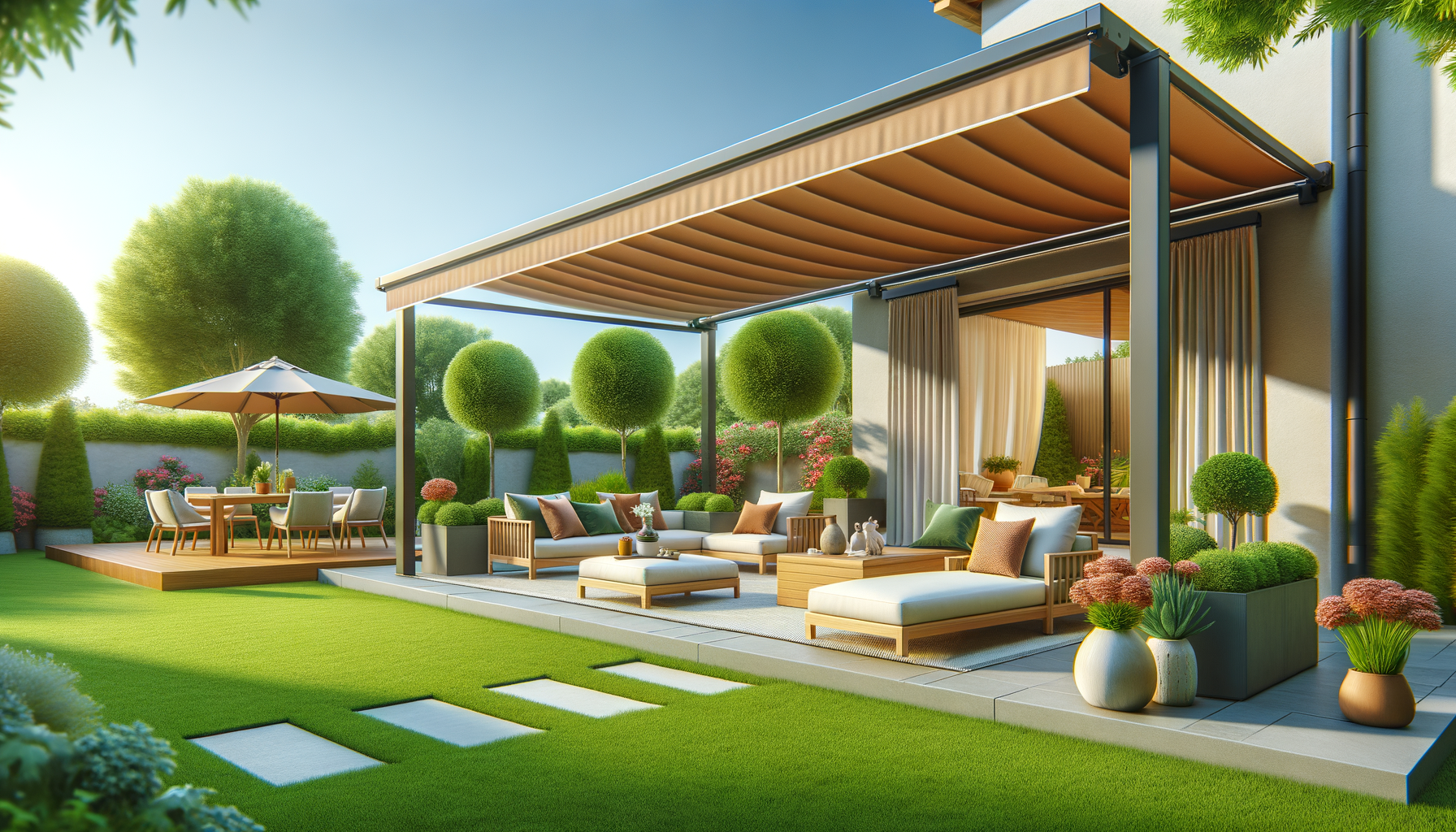Introduction to Retractable Awnings
Retractable awnings have become a popular choice for homeowners looking to enhance their outdoor spaces. They offer a unique combination of style and functionality, providing shade and protection from the elements while also adding an aesthetic touch to any property. These awnings are designed with flexibility in mind, allowing users to extend or retract them as needed, making them a versatile solution for managing sunlight and weather conditions. With the ability to cover patios, decks, and even windows, retractable awnings can transform an outdoor area into a comfortable living space.
The materials used in retractable awnings are typically durable and weather-resistant, ensuring longevity and minimal maintenance. Common materials include acrylic fabrics, which are known for their UV resistance, and aluminum frames that provide sturdy support. This combination not only enhances the durability of the awnings but also contributes to their sleek, modern appearance. Moreover, retractable awnings come in various colors and patterns, allowing homeowners to choose styles that complement their existing decor.
One of the significant advantages of retractable awnings is their energy efficiency. By providing shade, they help reduce indoor temperatures, which can lead to lower air conditioning costs in the warmer months. Additionally, they protect furniture and flooring from sun damage, extending the life of these items. This energy-saving aspect, combined with their aesthetic appeal, makes retractable awnings an attractive investment for any homeowner looking to enhance their outdoor living experience.
Benefits of Retractable Awnings
Retractable awnings offer a plethora of benefits that contribute to their growing popularity among homeowners and businesses alike. One of the primary advantages is their ability to provide shade on demand. Unlike fixed awnings, retractable versions can be adjusted to suit the weather conditions, offering flexibility and control over the amount of sunlight that enters a space. This adaptability makes them ideal for varying climates and seasons.
Another significant benefit is the protection they offer against harmful UV rays. By blocking direct sunlight, retractable awnings help safeguard skin from potential sun damage, making outdoor activities more enjoyable and safer. Additionally, these awnings can protect outdoor furniture from fading and deterioration caused by prolonged sun exposure, thus preserving the aesthetic appeal and functionality of outdoor spaces.
Retractable awnings also enhance the usability of outdoor areas. By creating a shaded environment, they allow homeowners to utilize their patios and decks more frequently, transforming them into comfortable spaces for relaxation, dining, or entertaining guests. This increased usability can significantly enhance the value and appeal of a property, making it more attractive to potential buyers.
Furthermore, retractable awnings contribute to energy efficiency by reducing the need for air conditioning during hot summer months. By shading windows and outdoor areas, they help maintain cooler indoor temperatures, leading to potential savings on energy bills. This eco-friendly aspect is particularly appealing to environmentally conscious consumers seeking sustainable home improvement solutions.
Choosing the Right Retractable Awning
Selecting the appropriate retractable awning for your home involves considering several factors to ensure optimal performance and satisfaction. One of the first considerations is the size of the area you wish to cover. It is essential to measure the space accurately to determine the dimensions of the awning needed to provide adequate coverage.
Material selection is another crucial factor. As mentioned earlier, acrylic fabrics and aluminum frames are popular choices due to their durability and weather resistance. However, homeowners should also consider the specific climate conditions in their area. For instance, if the region experiences heavy rainfall, opting for water-resistant fabrics would be beneficial. Similarly, areas with high wind speeds may require sturdier frames to withstand the elements.
Color and design preferences play a significant role in the selection process. Retractable awnings are available in a wide range of colors and patterns, allowing homeowners to choose options that complement their home’s exterior and personal style. Neutral tones are often favored for their versatility, while bold patterns can add a touch of personality and flair.
Lastly, consider the type of operation mechanism that suits your needs. Manual and motorized options are available, with motorized awnings offering the convenience of remote control operation. This feature can be particularly beneficial for larger awnings or for those who prefer effortless adjustment.
Installation and Maintenance Tips
Proper installation and maintenance of retractable awnings are essential to ensure their longevity and functionality. While some homeowners may choose to install awnings themselves, hiring a professional installer is often recommended to guarantee accuracy and safety. Professional installers have the expertise to ensure that the awning is securely mounted and aligned, preventing potential issues such as sagging or misalignment.
Once installed, regular maintenance is crucial to keep the awning in excellent condition. Cleaning the fabric periodically helps prevent the buildup of dirt, mold, and mildew, which can affect the appearance and durability of the awning. Most manufacturers provide specific cleaning instructions based on the fabric type, so it is advisable to follow these guidelines for optimal results.
Inspecting the awning’s frame and components is also important. Checking for signs of rust or wear can help identify potential problems early, allowing for timely repairs or replacements. Lubricating moving parts, such as hinges and joints, ensures smooth operation and reduces wear over time.
During extreme weather conditions, such as storms or heavy snowfall, it is advisable to retract the awning to prevent damage. This precautionary measure helps protect the awning from excessive strain and prolongs its lifespan. By following these installation and maintenance tips, homeowners can enjoy the benefits of their retractable awnings for years to come.
Cost Considerations and Budgeting
When planning to enhance your outdoor space with retractable awnings, understanding the cost considerations and budgeting requirements is essential. The price of retractable awnings can vary significantly based on factors such as size, material, and additional features. On average, homeowners can expect to spend anywhere from a few hundred to several thousand dollars on a retractable awning, depending on their specific needs and preferences.
One of the primary cost determinants is the size of the awning. Larger awnings naturally require more materials and labor, leading to higher costs. Additionally, custom-designed awnings tailored to fit unique spaces may incur additional expenses compared to standard sizes.
Material choice also influences the overall cost. While acrylic fabrics and aluminum frames are commonly used for their durability and weather resistance, opting for premium materials or specialized coatings can increase the price. Motorized awnings with remote control features typically cost more than manual versions, but they offer added convenience and ease of use.
When budgeting for retractable awnings, it is important to consider installation costs. Professional installation is often recommended to ensure proper alignment and secure mounting, which can add to the overall expense. However, investing in professional installation can prevent potential issues and extend the lifespan of the awning.
To make the most of your investment, consider the long-term benefits of retractable awnings, such as energy savings and increased property value. By carefully evaluating your needs and exploring different options, you can find a retractable awning that fits your budget while enhancing the functionality and appeal of your outdoor space.








